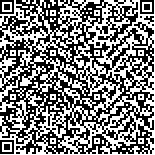下载中心
优秀审稿专家
优秀论文
相关链接
摘要

基于样本统计分析及冻结和融化地表的辐射/散射特性建立了判别地表冻融状态的决策树,首次联合使用散射指数、37GHz垂直极化亮温及19GHz极化差3个关键指标识别出地表或植被冠层的冻融状态,同时剔除了沙漠和降水的影响.利用国际协同加强观测期(CEOP)在青藏高原地区的土壤温度和湿度观测系统获取的4cm地温数据代表浅层土壤真实冻融状态验证分类结果,其准确性达87%.经分析,约40%和73%的误分分别发生在浅层土壤温度为-0.5-0.5℃和-2.0-2.0℃之间,即冻结点附近;且多发生在冷暖季节过渡时期,即4-5月和9-10月,分别占误分的33%和38%.基于该决策树获得的2002年1O月-2003年9月中国全境地表冻结日数图,以中国冻土区划及类型图为参考进行精度评价,其总体分类精度为91.66%,Kappa系数为80.5%,且冻融界线与季节冻土分布南界具有较好的一致性.
A decision tree algorithm was developed to classify the freeze/thaw status of the surface soil based on the cluster analysis of samples such as frozen soi,l thawed soi,l desertand snow, alongwithmicrowave emission and scattering characteristicsof the frozen/thawed soi.l The algorithm included five SSM /I channels (19V,19H,22V,37V,85V) and three crucial indices including scattering index,37GHz vertical polarization brightness temperature and19GHz polarization difference, and took into consideration the scattering effectofdesertand precipitation. The pureness of samples is essential to the analysis of themicrowave brightness temperature characteristics, which is prior to deciding the thresholds ofeachnodeof thedecision tree. Wehave selected four typesof samples, including frozen soi,l thawed soi,desertand snow. The frozen soilhas some specialmicrowave emission and scattering characteristics different from the thawed soi:l ①lower thermodynamic temperature and brightness temperature;②higher emissivity;③stronger volume scattering, and the brightness temperature decreasedwith increasing frequency. The threshold of each node of the decision tree can be determined by using clusteranalysis of three vital indices, and calculating the average and standard differences of each type and each index. The4cm-depth soil temperatureon theQinghai-TibetanPlateau observed by SoilMoisture andTemperatureMeasuring System of GEWEX-Coordinated EnhancedObserving Period, were used to validate the classification results. The totalaccuracy can reach about 87%. A majority ofmisclassification occurred near the freezing point of soi,l about40% and 73% of the misclassified cases appeared when the surface soil temperature is between- 0.5—0.5℃and-2.0—2.0℃, respectively. Furthermore, the misclassificationmainly occurred during the transition period between warm and cold seasons, namely April-May and September- October. Based on this decision tree, amap of the numberof frozen days duringOc.t2002to Sep.2003inChinawas produced by composing5days classification results due to the swath coverage of SSM /I. The accuracy assessment for pixelswithmore than15 frozen days (less than15meaning the short time frozen soil)was carried outwith the regions of permafrost and seasonally frozen ground inmap of geocryological regionalization and classification in China as reference data (Zhou et a.l,2000), and the total classification accuracywas91.66%, while theKappa coefficientwas80.5%. The boundary between frozen and thawed soilwas well consistentwith the southern limitof seasonally frozen ground. A long time series surface frozen/thawed dataset can be produced using this decision tree, which may provide indicating information for regional climate change studies, regional and global scale carbon cyclemodels, hydrologicmodel and land surface model so on.

